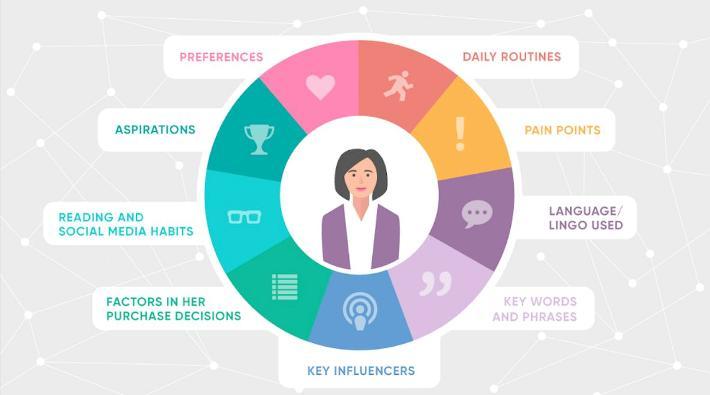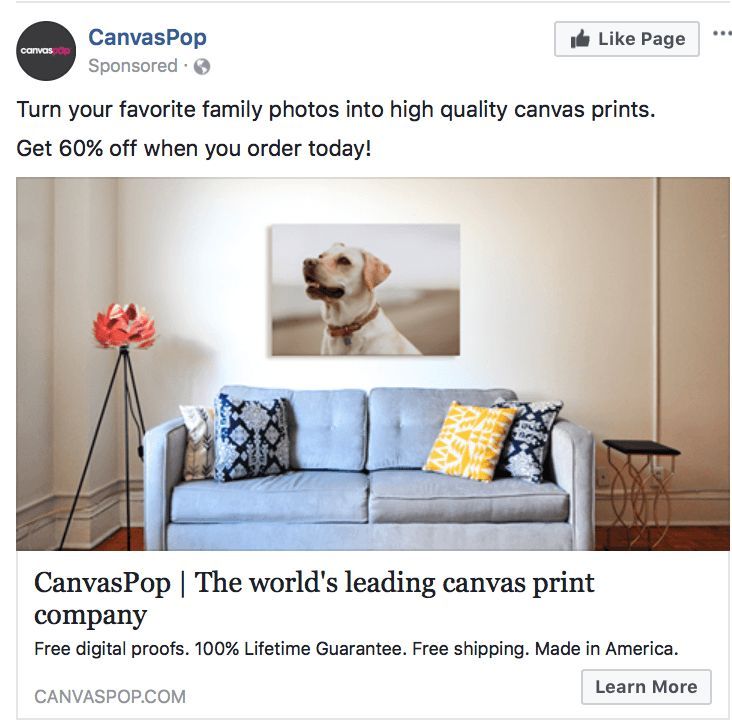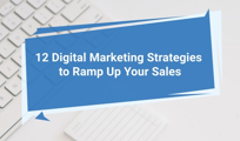Marketing has become complex. Marketers now have an extensive arsenal of technological weapons to load with advertising content and blast directly into the face of potential customers. With people continuously staring into this or that digital ad—i.e., on their phones, tablets, computer screens, or TVs—exposing them to a product has never been simpler.
However, people have grown very sensitive to marketing due to this incessancy, often finding it tedious and irritating. As a result, marketing has adjusted and matured in order to continue to be successful. It needs to be discrete, engaging, and seamless in a way that convinces customers that it was their own choice to invest in a particular product. This has been achieved through the advent of targeted, personalized marketing.
What successful ad campaigns do is target specific demographics from multiple angles. They are broad in scope while closing in on a particular defined group of people. Marrying these two aspects may not have been possible before, but nowadays you really can have your cake and eat it. There are many digital marketing strategies for small businesses to take advantage of. And for the most part, they’re easier to tackle with efficient, targeted marketing campaigns.
The following looks at some of the ways modern marketing giants reach customers with the different platforms available to them and provides tips for you to do the same.

Who Is Your Customer?
Regardless of what channel you’re trying to reach customers on, it’s crucial to understand who your product is for and know the subject of product management. As such, marketing teams will often generate customer personas that provide archetypal representations of the general consumers of their products. This allows them to:
- understand customer needs and come up with appropriate solutions for them;
- develop products that implement features which achieve company goals;
- prioritize which platforms, projects, and campaigns they should invest in;
- ensure that there is a consistent customer-centric approach throughout the company.
All in all, companies will be able to design their image and marketing strategies in order to appeal to the intended consumer. Subsequently, they can continue to deliver a superior personalized customer experience.
A customer persona should be based upon real data and strategy. This is where some people fall short. They rely on guesswork, assumptions, and unreliable data. Instead, qualitative and quantitative studies ought to be carried out to determine traits shown by your typical customers that can be used to predict their buying habits. Try to focus on:
- Behavioral drivers: What do your customers want to accomplish? What can you offer to aid them in the pursuit of this? If your customers are business-oriented, perhaps they are looking for time-saving products like video conferencing software.
- Obstacles to purchasing: What are your customers’ deal breakers? What information would you need to provide to alleviate these concerns? Maybe they need to know specific answers to questions, such as ‘what is video conferencing?’.
- Mindset: What expectations will your customer have before coming to you? This may depend on the type of product you are offering. For instance, do you supply utility items such as meeting apps or vanity items like musical instruments?

With these questions in mind, design surveys that help to build an accurate picture of the customer you want to attract. A great place to position one of these surveys is at a point when customers are abandoning a purchase. You can trigger a pop-up to appear when someone is trying to navigate away from your website. This specifically targets those who have been deterred from buying.
Customer personas can be bolstered by quantitative data given by analytics tools such as Google Analytics. These will collect data about visitors to your site and give you information such as geographical region, gender, age, education level, beliefs, and more. Such demographic factors can be collated with the psychographic personas that you have built up using your qualitative data. This is a refining process allowing you to pin down more specific groups.
After conducting this research, a representation of your typical customer should emerge. Affiliate yourself and your team with this representation, treat it as though it were a real person, and work on products with the objective to satisfy this fictional person.
You may find that you can create multiple variations of your typical customer—this is fine. In fact, this is to be expected if you produce a product that appeals to many different people or businesses, i.e., an app for booking appointments. If this is the case, then segment your data into parts representing different types of people and maybe launch different campaigns simultaneously. The beauty of targeted advertising is that you can deliver the right ad campaign to the right demographic.
Creating Content
Conducting thorough research into your products’ consumers and building an accurate depiction of them and their likes and dislikes will enable you to produce bespoke content designed specifically for them. As an example, imagine you are a company who produces shampoo and other beauty products. Your customer persona research reveals that typical consumers of your product are female, 30-50 years old, parents, from the USA, and are environmentally-conscious.

First off, this tells you that you need to ensure your product is environmentally sound and use this fact in your branding. Beyond this, however, this information should direct the sorts of topics your content focuses on.
Content should be designed to intrigue the same types of people as those buying your product. The goal is to grab the attention of these people and then discreetly make them aware of your product, coaxing them to investigate it of their own volition.
In the example given above, content addressing environmental factors such as global warming and the impacts of certain types of product on the environment are going to attract more potential customers than, let’s say, an article about how to record webinars.
Distributing Content
Next up, distribution. Turn back to your research and look up through which medium you are best able to reach your target customers. It should tell you whether your customers are likely to be scrolling through Facebook and Instagram on their phones or if they’re more old-fashioned and like to be contacted via email.
Maybe your product is the kind of thing that people generally only buy when they really need it, and tend to come across it from a self-conducted independent search. In this case you need to focus most of your efforts on search engine optimization.
So you need to weigh up exactly how best to distribute your efforts. Let’s look at a couple of platforms in more detail.
Facebook and Instagram
Social platforms like Facebook and Instagram are fantastic places to position content that features a call to action or CTA for short. A CTA is a marketing tool that is used to prompt people into completing an immediate action. You will often see these on Facebook as little buttons in the bottom right of an advert, reading something like ‘Learn More’ or ‘Shop Now’. On Instagram stories, the unique prompt is to ‘Swipe Up’. If you schedule Instagram posts properly and share appealing visuals, your strategy will be more likely to succeed.
Adverts on these social platforms should be designed to persuade people to click these CTAs. They should not be overly wordy or pushy. Take a look at the following example for guidance:

As you can see, CanvasPop has not messed about. There is a description of what the company can offer you, a time-sensitive offer, and a picture showing an example of an available product. No matter where you look in this advert, you are getting some idea of what the company does or seeing an enticing benefit that the company offers.
People don’t use social platforms to be advertised to, and won’t waste much precious scrolling time looking at an advert, so this brevity is very important.
CanvasPop has also been clever to introduce a sense of urgency by offering a time-sensitive deal. If a potential customer thinks that they will lose out by leaving it until later, they are much more likely to devote some time right now.
Notice that the CTA itself doesn’t explicitly encourage a sale—it simply offers an opportunity to ‘Learn More’. This way, people are more comfortable as there is no danger of entering into a commitment just yet. They’re just having a look.
Landing Page
The first thing your visitors will see after clicking the CTA in your advert is what’s known as the landing page. This is like your first meeting with the customer: you need to make a good impression. There are a number of things you have to pay attention to so you can maximize conversion rates and minimize bounce rates.

Appearance
First things first, ensure that you look good. Keep things nice and neat, so that everything is in its own place and easy to find and identify. Put your main offer right at the top of the page where customers will immediately see it. You can highlight other important elements by using contrasting colors. This makes any CTAs present on the landing page easily recognizable.
It’s also important to make sure to use the same color schemes, fonts, and logos as in all of your ads and other media. If there is any disparity, a customer may be left confused and wondering whether they are in the right place.
Navigation
There’s a number of different things that a customer will want to do when they get to your landing page. Some will have already made up their mind to buy and simply want to be directed to the ecommerce sales page. Others will want to read about the product first. For this reason, there should be obvious direct links to all of these different areas of your site.
Support
Some people will need detailed guidance and will be visiting the site to find it. They may be people who already have your product but need assistance in using it, or they may be looking to settle a few concerns they have before buying.
Either way, your landing page needs to include links to areas where they can find support in the form of FAQs or a ‘Contact Us’ page. FAQs will include a list of answers to common questions about a product. E.g., what is a virtual phone service?
Newsletter signup
The landing page should feature some way of picking up recipients for your email newsletter. Offer some incentive for subscribing, alongside a short form for data collection. Some say that the fewer form fields the better, so the optimal form would just have the one field: the email address. This approach is bound to get you the maximum amount of sign-ups, but adding a few extra fields such as a budget will allow you to identify promising leads.
Summary
To sum up, in order to effectively reach your audience and snap up conversions, there are three main steps. Conduct research to figure out who your audience are. Then, create relevant and attractive content that will appeal to them. Finally, distribute that content accordingly amongst the various platforms they frequent.
Author's bio:
Richard Conn is the Senior Director, Search Marketing for RingCentral, a global leader in unified communications and contact center software.
He is passionate about connecting businesses and customers and has experience working with Fortune 500 companies such as Google, Experian, Target, Nordstrom, Kayak, Hilton, and Kia. Richard has written for sites such as Cincopa and Multibriefs.





